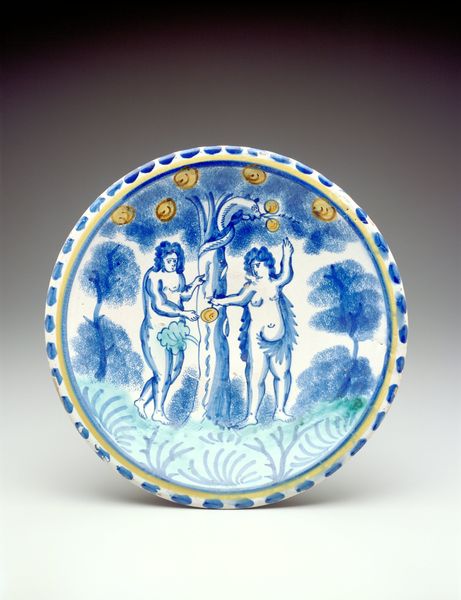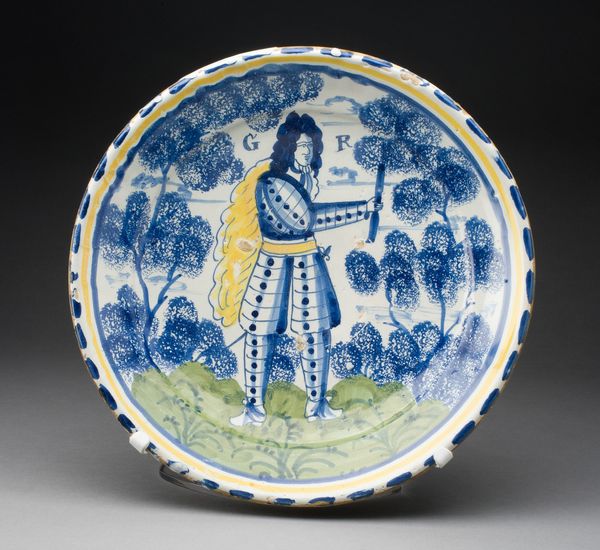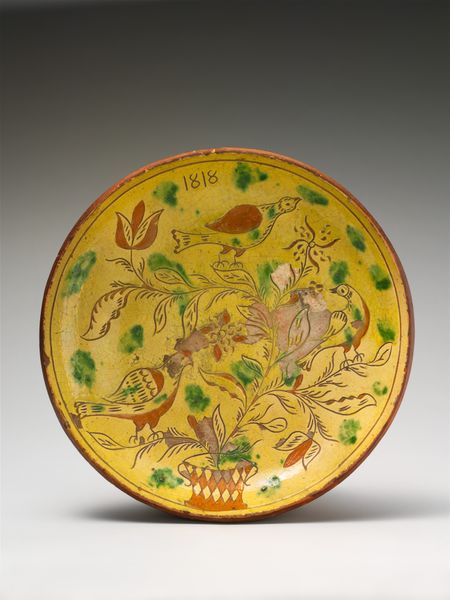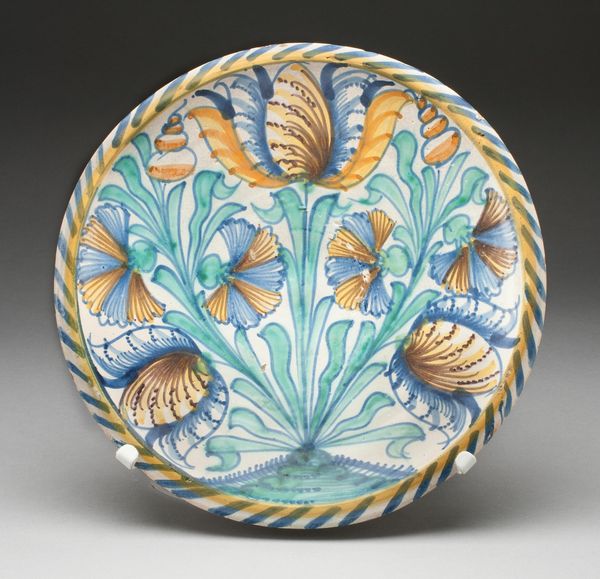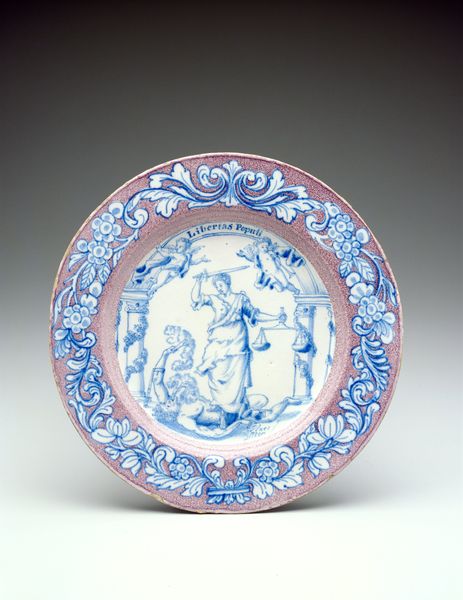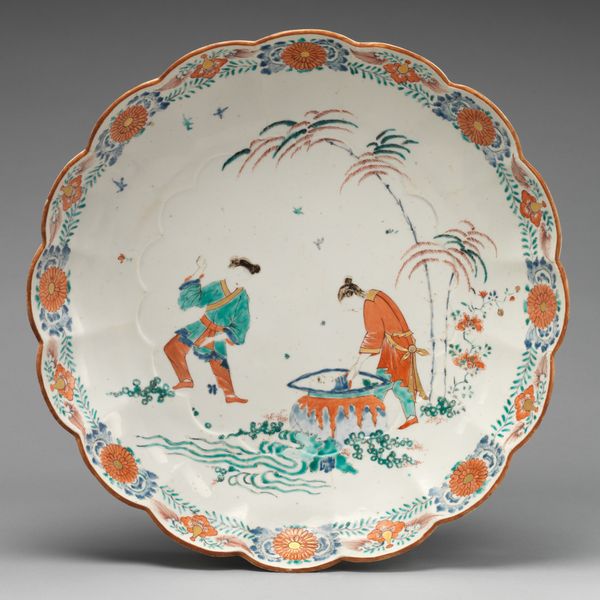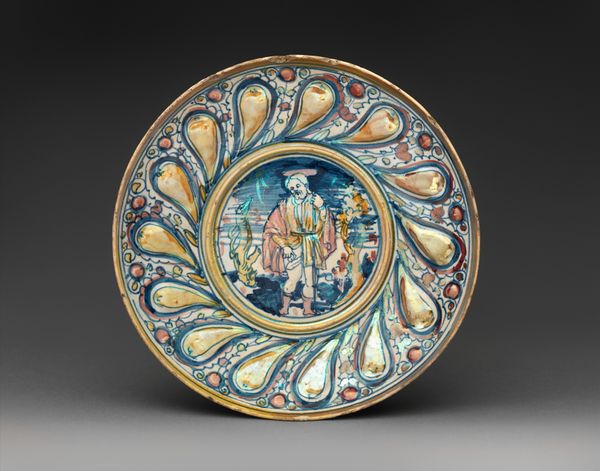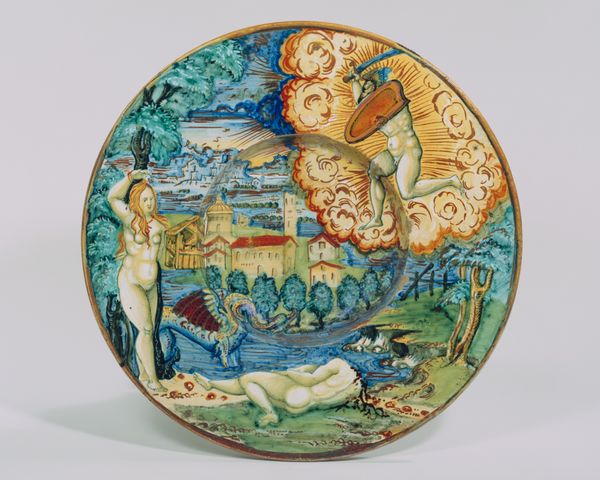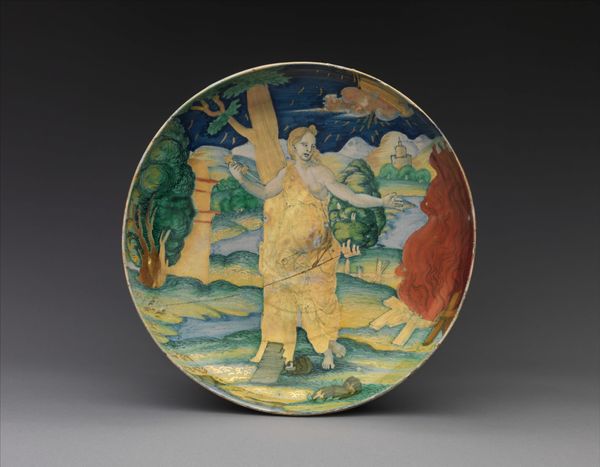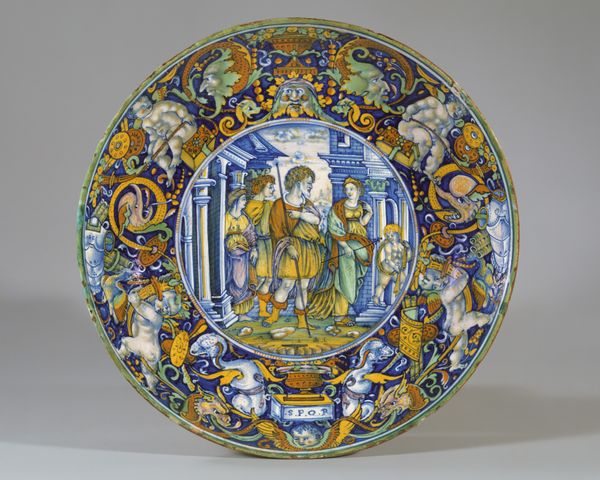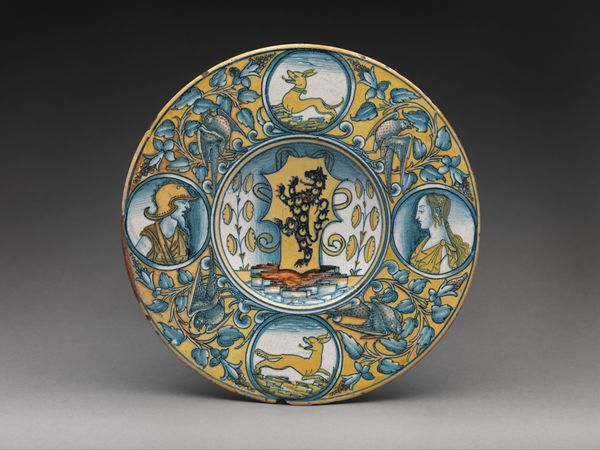
ceramic
#
circular oval feature
#
egg art
#
3d printed part
#
war
#
product fashion photography
#
ceramic
#
round design
#
retro 'vintage design
#
ceramic
#
watercolour illustration
#
decorative-art
#
disk design
#
cartoon theme
Dimensions: Diam. 43.2 cm (17 cm)
Copyright: Public Domain
Curator: So, here we have an earthenware charger made around 1675 by the Lambeth Potteries. The Art Institute of Chicago holds this piece, a striking example of tin-glazed Delftware. What’s your initial take? Editor: Well, it’s… striking. A little unsettling, actually. The palette is deceptively cheerful, with those bright yellows and blues, but it doesn’t quite mask the rather awkward figures and that serpent giving off real bread loaf vibes. It reminds me of a child's art depicting a serious matter. Curator: That visual tension is exactly what grabs me! Look closely—the piece renders the biblical story of Adam and Eve with almost brutal directness. Consider the composition; it's so carefully arranged, almost symmetrically, within the circular form of the charger. Yet, the figures are rather flat and stylized, with very little attempt at realism. Editor: Yes, there’s a deliberate stylization, even primitivism. That flat rendering directs us, unmediated, to the symbolism. And what about the snake, like pastry with scales and tiny eyes, coiling around the tree offering temptations? A symbolic key is almost forced to our eyes. Curator: Absolutely. That serpent is almost comical in its artificiality. Which contrasts sharply with the weightiness of the scene. And note the surrounding stylized foliage: is that an earthly paradise, rendered flat and schematic as it is? There's a push and pull between playful decorativeness and potent narrative. Editor: I appreciate how the craft brings the content into stark relief. In one sense, you have this domestic object, designed to be used, touched, yet illustrating something sacred and tragic. Its placement—between display and function—hints at our everyday engagement with those profound stories. Curator: Precisely. Placing weighty stories onto daily objects is a strange concept that, upon looking into more depth, provides the story with yet another interesting layer. And look at the edge of the charger. These swirling blue lines almost capture a sense of the circular inevitability. Editor: And to be faced with something we see frequently reimagined as decorative art almost makes it all the more poignant.
Comments
No comments
Be the first to comment and join the conversation on the ultimate creative platform.
